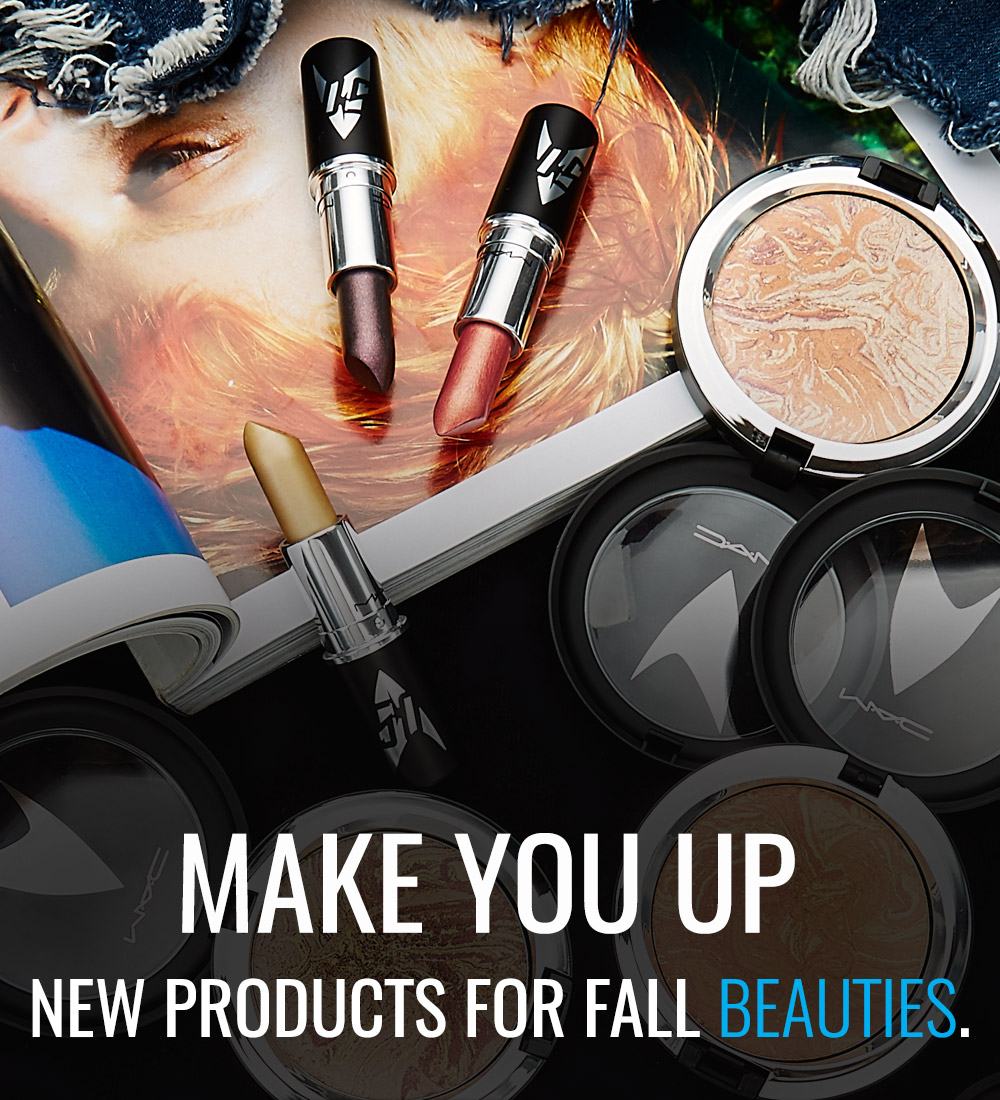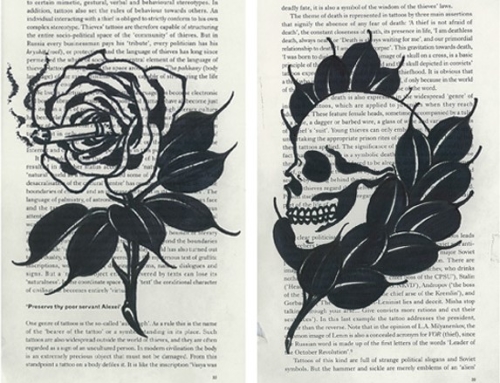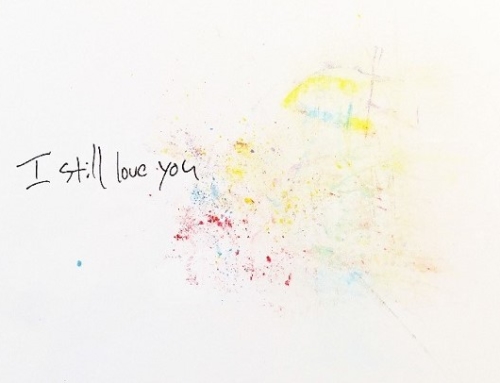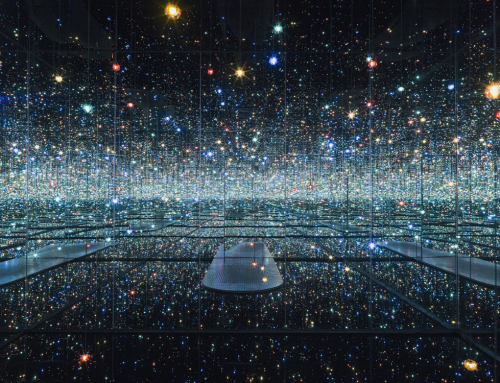Below London’s Waterloo Station, local and international artists of multi-disciplines have found a playground. Amongst the latest cultural content to come out of The Old Vic Tunnels — in collaboration with The Future Tense — is Joseph Loughborough premiere solo exhibit: The Anatomy of Strangers.
The dark mood of Loughborough’s series of charcoal and graphite etchings, draw the viewer into the tense contemplations comprising the British artist’s recent self-imposed exile in Paris. Born from Pandora’s treasure trove of emotions, the pieces — completed over the span of 12 months — embody the grim side of human nature: sin, desire, fear and existential anxiety over one’s own absurdity. The enclosed quarters of The Old Vic Tunnels, provides an optimal location for a series of art that itself reads as claustrophobic in its internal struggle.

FILLER caught up with Loughborough after his live installation last month to talk about the inspiration behind his new collection, and the attraction of life’s dark side.

Your most recent exhibit, The Anatomy of Strangers, explores mortal sin and desires. What about the “base” character of human nature piques your curiosity?
It’s hard to pinpoint one particular human characteristic that intrigues me the most. More often than not it is a combination of two facets intertwined, a juxtaposition of virtue and vice . For example, fidelity and hatred. It is from the midway point between this confrontation that I derive most interest. Often these contradictory aspects are working in partnership, complementing and concealing each other. Subconsciously, it’s often the element that is most hidden that arouses my interest the most.
During your work on this project, did you come to terms with some of the contradictory aspects of your own personality?
Art would not be healthy if we did not explore ourselves a little. I developed my latest body of work over the last 12 months whilst living in self-imposed exile in Paris. Here, I have sought to explore ideas of mortal sins and desires alongside fears and the acknowledgement of one’s own absurdity.
Sounds like a period of self-relfection, I imagine that must have gone back into the work?
Although how I observe myself and how I see others is integral to my methods for finding inspiration, much of this body of work originates from studying my relationship with my partner. In our day-to-day relationships with friends and lovers there comes a point at which we have to confront polarities of common emotion. My drawing deals with strengths and weaknesses in my own social imbroglio.
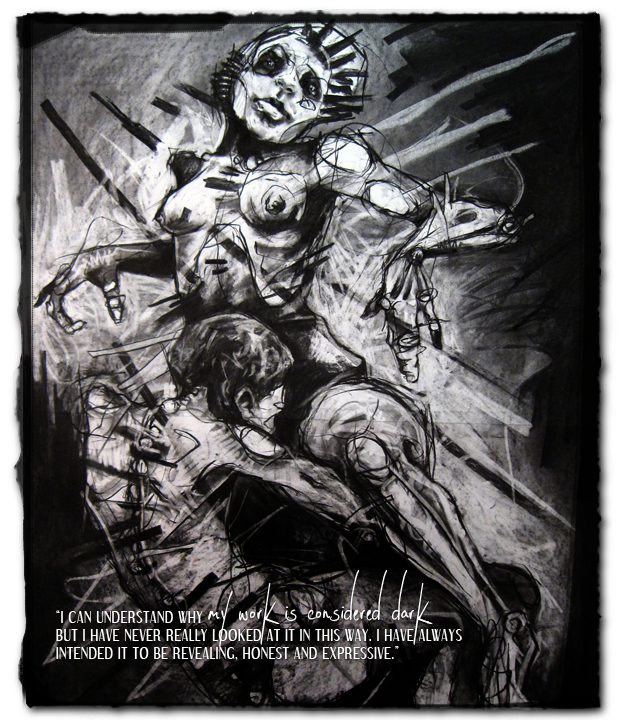
I understand that the exhibit also explores the absurdity of life, would you say you’re something of an existentialist?
I’m not quite sure I’d go that far but, if an existentialist is someone who contemplates how to find a meaning, when ultimately there is none, we could all be labelled as such at some point in our lives.
The works in your most recent exhibit peer into social interaction between strangers. In your observations, how do most people act towards strangers?
With fascination and fear.
Any fear or fascination with the crowd during the live installation portion of your exhibit?
I have always enjoyed how making a piece of work in front of others changes the dynamic of the piece. Firstly, there is much less time to create the work and, therefore, an altered thought process comes into play; mistakes are dealt with differently. They have to be acted on instantly. Usually I leave mistakes to brew for a while to see how I can incorporate them into the work as the piece develops organically. My actual mark making has always been very rapid so [it] works well in a performance situation.
Doesn’t sound like the mood of the crowd plays in too much into your work, it seems more about how your work changes the crowd.
Once I’m in ‘the zone’ I rarely notice the audience although I’m always aware of the surrounding buzz and energy in the space. Participating in a fair few skateboarding competitions in my youth has also helped the way I deal with these situations as situations. You can’t let the mood of the crowd change what you are doing.
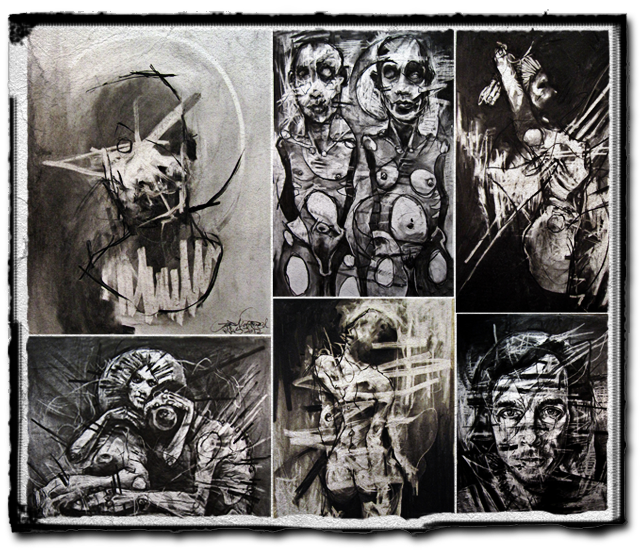
In terms of mood, often your work seems to have dark overtones. Do you find your inspiration derives more from the shadowy side of life?
As I said earlier, it’s often the things we hide that provoke my thoughts the most. I can understand why my work is considered dark but I have never really looked at it in this way. I have always intended it to be revealing, honest and expressive. Some of the pieces act like a personal exorcism through which I try to express, rather than deny, the emotions I encounter. Through my drawing, I strive to grasp a comprehension of the human condition and question how we interpret our oft-untold fears and desires.
Humanity is very present in all your work. Aside from the deeper emotion experienced by individuals, the structure of their face alone seems to be a great interest of yours? Do you look for anything in particular when selecting faces to draw?
I’m very interested in the sensual curves of the human body. The face is usually the first thing we judge when we encounter another person. Physiognomy and its obvious flaws have always interested me. Perhaps this is why I attempt to deconstruct faces in the hope that a truth is revealed in their reconstruction.
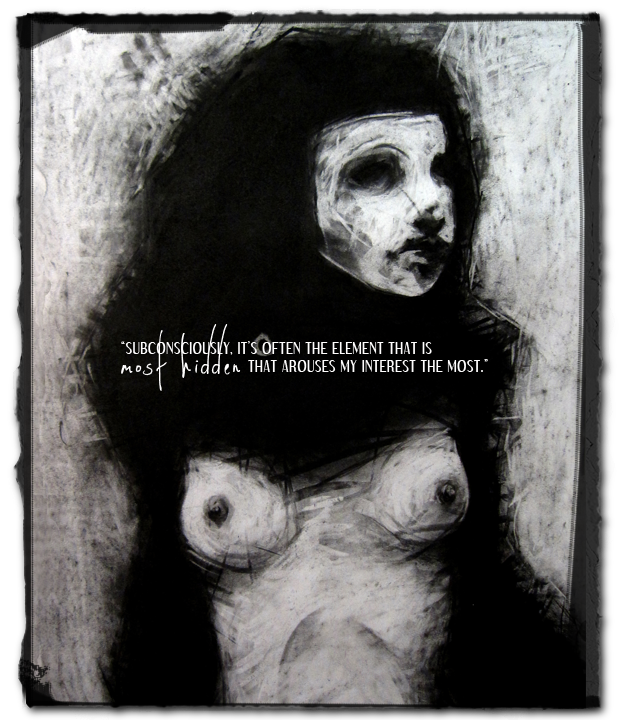
Is there a single connecting theme/mood in your oeuvre?
Since childhood, the human form has been evident in nearly all of my work.
As a young artist, how would you describe the current state of the industry, and its latest movements?
I used to be very interested in the way the industry worked, but found that if I think about it too much, it can stifle my creativity. I am an artist and will carry on making work regardless of the current state of the art market – although it’s obviously better for me commercially if things are buoyant, this won’t affect my practice or the way I go about things. My art is deeply embedded in my soul.
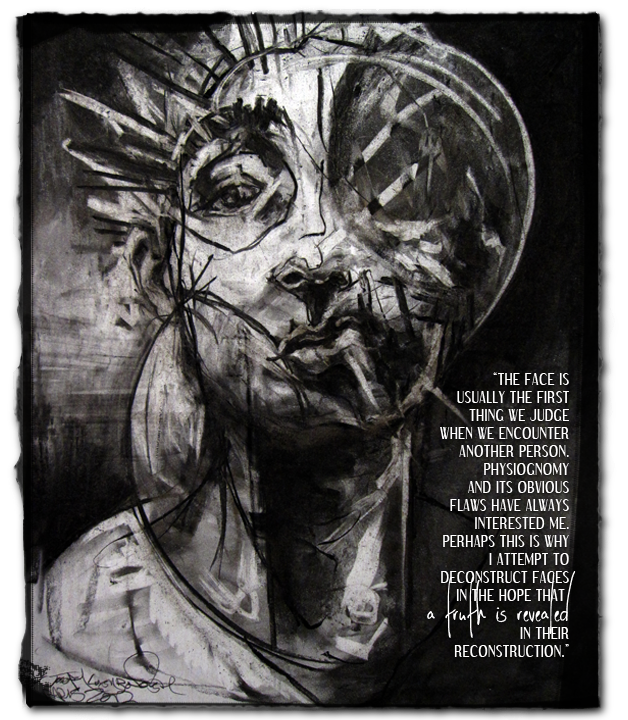
Are there any peers you’re watching?
Recently I have had the pleasure of seeing the studio of, and meeting, the French painter Isabelle Vialle. We are working with the same galley in France, and I am always blown away by the subtlety of her work when seen in the flesh. She is part of the French neo-expressionist movement, along with a number of artists in a sub-scene that is almost completely unknown in the UK.
What about possible collaborations?
Regarding collaborations, I have attempted a fair few projects with other painters, [but] I have always felt [the projects] were unsuccessful. If I were to attempt another, I would like it to be with someone who works in a completely different medium, perhaps film, theatre or dance.
In terms of getting your own art out there, do you see any benefit in social media in terms of widening the art world’s reach?
Yes it has, but at the same time there is a saturation and even greater proliferation of artists, so what we see gets diluted much faster. As with music and film, art is now becoming more of a quick fix.
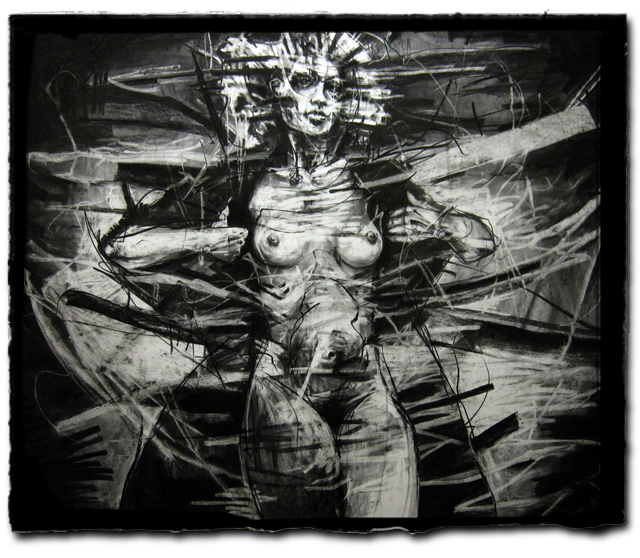
Is social media something you consider a professional tool?
Yes. In its current state of growth you would be foolish not to utilise such a powerful networking apparatus. There is no denying the power of Twitter, Facebook and so on, and I think it’s important to embrace these tools, and use them to their full advantage.
Are there any new mediums you are interested in utilizing or incorporating in your art?
Recently, I’ve been working exclusively in charcoal and graphite with a strong focus on line and form. However, colour in general is something I’d like to have more control over and explore in greater depth at some point. I’d also like to spend more time working in oils.





